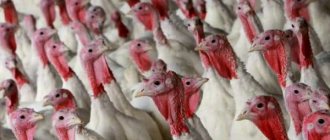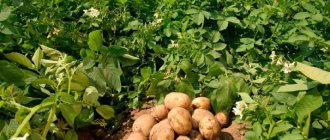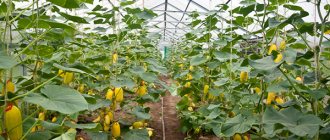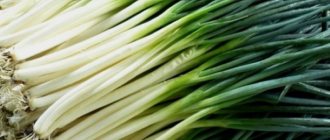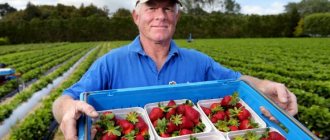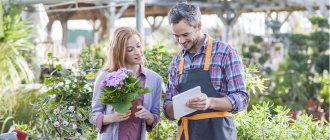Features of floriculture
The flower business has always been and remains one of the most reliable types of income. Beautiful flowering plants are in constant demand - birthdays, weddings, such important dates as Knowledge Day or Teacher's Day, and simply the desire to demonstrate your concern for the woman you love provide flower gardeners with regular customers. Moreover, there is a demand for flowers both in winter and in summer, and they are especially actively purchased during significant holidays, such as International Women’s Day, Victory Day and many others.
The flower business is considered one of the most reliable
But first, we will begin to study a business plan for creating your own flower business and study the features of this industry.
- Remember that the demand for flowers is highly dependent on seasonality. Above, we have already discussed the main dates when demand is maximum and there is an opportunity to make good money. However, during the rest of the year, flowers will not be sold in such large volumes.
- Also be prepared for the fact that in the summer the price of the product will have to be reduced - competition at this time of year increases greatly, the products are supplied to the market by those gardeners who grow flowers only in the summer. That is why it is best to immediately plan to grow plants in a greenhouse in winter.
- Flowers are plants that need constant care. You will need basic knowledge about floriculture, and you will have to pay a lot of attention to caring for plants. Any wrong action, lack of watering, overwatering or overheating can lead to massive death of plants, and at the same time losses, sometimes quite large. That is why you must be an expert in floriculture, or, alternatively, you can hire a specialist in this field.
The demand for flowers depends greatly on seasonality
Prices for flower seeds
seeds flowers
How to start a business growing indoor plants
The first step may be to propagate the plants. You can test your strength on plants that won’t take much time to care for. We are talking about plants that grow quickly: parsley, mint, dill and other spice plants.
Of course, you will have to invest a little money (purchase of special soil and disposable plastic or paper cups). Next, you need to plant strong shoots of plants in purchased cups. As soon as the sprouts get stronger and take root, you can begin to search for clientele.
Documentation
To run a flower business, you need to take care of having the necessary permits. You can become an individual entrepreneur or cheat a little and take advantage of the advantages of being the owner of a private household plot (LPH). What's the trick? It’s simple: if you have a plot of land, and local authorities have documented that you are the owner of that same private household plot, you can avoid unnecessary expenses (including paying taxes, submitting an income tax return, etc.). Also, you don’t have to keep strict accounting records.
On a note! Although private household plots are very convenient financially, they also have a downside. You will not be able to sell flowers yourself, but only through resellers. In some cases this may not be economically viable.
An individual entrepreneur, although forced to pay taxes and closely monitor accounting, is still free to set prices and sell his products. To become a businessman, you need to go through certain stages.
Step 1. Register as an individual entrepreneur (state registration procedure).
Certificate of state registration of an individual as an individual entrepreneur
Documents for registration of individual entrepreneurs
Step 2. Select OKVED code. In our case, this is the one called “Ornamental Gardening” and subsection A – “Growing Flowers”.
Selecting OKVED code
To register an individual entrepreneur, fill out an application form P21001. When filling out sheet “A”, information about the types of economic activities is entered
Decoding codes
Step 3. As a taxation system, you must choose the Unified Agricultural Tax (USAT). His rate is 6% of all profits.
Unified Agricultural Tax (Unified Agricultural Tax) - replacement of payment of corporate income tax, VAT (except for the tax payable in accordance with the Tax Code and Labor Code of the Russian Federation) and corporate property tax and insurance contributions
Conditions for the transition to Unified Agricultural Tax
Step 4. Purchase everything you need to start a flower cultivation business.
After registration, you need to purchase everything you need to run your business.
Organization of the process
To start a business, you first need to decide on the location and premises. The easiest way to organize the process is on your own personal plot. In its absence, you will have to rent land.
Advantages and disadvantages of seedling business: video
Plot and greenhouse
If you grow a small amount of seedlings, then a home business can be an excellent solution to start. You just need to select a suitable room, install shelving and connect phytolamps. It is recommended to set up beds next to the greenhouse in order to plant the remaining plants that cannot be sold. In order for the business to bring maximum profit, after the end of the seedling season, you can grow vegetables and herbs in the greenhouse for yourself or for sale.
Industrial cultivation of seedlings requires larger investments, since this will require the installation of a capital year-round greenhouse, heated by infrared heaters and illuminated by powerful lamps. Such a greenhouse with all equipment has an area of 120 square meters. m. will cost 350,000–450,000 rubles.
But organizing such a large greenhouse farm at the initial stage will be impractical. It will require not only a large amount of investment, but also experience. It is better to start in the seedling business with a greenhouse measuring about 20 square meters. m., the cost of which, together with shelving and equipment, will be 50,000 rubles.
Advice to a summer resident: How to arrange beds in a 3 by 6 greenhouse
Containers, packaging
Planting material can be grown in different containers:
- disposable cups;
- cassettes with cells;
- plastic boxes.
The use of boxes is the simplest and most economical. Before sale, the sprouts from them are packaged in ordinary plastic bags, which do not require large expenses. Growing in cassettes is very convenient, but the cost of seedling material increases significantly, which will negatively affect sales.
Related article:
How to plant seedlings in a snail
Therefore, it is most profitable to plant seeds in disposable cups, purchasing them in bulk. This is most relevant for those plants that have fragile stems and weak root systems (especially cucumbers).
Soil preparation
You can buy soil or prepare it yourself. The main thing is that it is light, loose, and does not contain pest larvae. If the soil is taken from the site, then it must be kept in the cold or heated at high temperatures. Ready-made soil mixtures are treated with steam.
It is necessary to work on the soil simultaneously with the installation of the greenhouse - in the autumn. All components are mixed, subjected to one of the above disinfection treatments and left until the seeds are planted. In this case, the number of components can be selected arbitrarily, but so that a moderately nutritious mixture without pests and microbes is obtained.
Planting and growing
Planting of seeds begins at the time indicated on the package. Each plant has its own period of emergence and development of seedlings until transplantation into open ground:
- cucumbers – 35 days;
- pepper – 90 days;
- cabbage, tomatoes – 40 days;
- strawberries – 125 days;
- flower crops – 30–90 days.
These dates are approximate and may vary slightly in one direction or another depending on the variety. In any case, you need to take into account that about another week will be needed to prepare the seeds and perform the picking.
The seedlings are fed with universal or special fertilizers. They are applied at intervals of 7–9 days in the morning along with watering or immediately after it. Once grown to the required size, the sprouts are picked, planted or packaged in shipping packaging and sent for sale.
Recommendations: How to grow quality seedlings
What should a greenhouse be like?
Perhaps the main aspect of success in the flower business is the right greenhouse. The success of the entire enterprise largely depends on where and how crops are grown.
Construction of a greenhouse for growing flowers for sale
The type of greenhouse that you should equip on your site directly depends on the amount of money available and your plans - someone wants to be content with a modest greenhouse and a small income, while others dream of a real flower farm. At first, we recommend investing minimally and expanding over time to avoid large risks.
Flowers in a greenhouse
On a note! If you have a regular greenhouse on your property in which you can grow flowers, then you can try to start a business with it, gradually expanding it.
Since the flower business in the future will still involve growing crops not only in summer, but also in winter, it would be advisable to build a thermos greenhouse on the site. Its advantage is that it allows you to save a huge amount of electricity needed to heat the room in winter.
Greenhouse thermos (example)
What is a thermos greenhouse? The optimal size for this structure is 5 * 20 m, and on the south side it should be about 2.5 m high (on the north side it is made lower by 0.5-0.8 m). The structure is installed on a strip foundation 70 cm deep. A thermos greenhouse cannot be mounted on bare soil, since in winter the soil and beds with plants will freeze. It is advisable to make the frame of the greenhouse from metal, and it should be covered with cellular polycarbonate (in two layers so that it is as warm as possible). A pitched roof is required to improve the possibility of the structure being heated by the sun. As for the location of the greenhouse, it should be on a flat area, stretching from east to west.
Example of a timber frame diagram for a recessed greenhouse
The thermos greenhouse must necessarily have a heating system - without it you will not be able to grow flowers in the winter. This can be either water heating with an electric boiler or a solar collector made of timber and black film.
Don’t forget about additional lighting, which will provide the flowers with the necessary amount of light in winter. The structure must also have a good and well-thought-out ventilation system.
How to build a thermos greenhouse (part 1)
How to build a thermos greenhouse (part 2)
Perhaps one of the most important elements of a greenhouse for flowers is the correct soil. But here everything will depend on what varieties of plants you will grow.
The soil in the greenhouse also plays an important role
Advice! To reduce costs at the very beginning of business development, use turf soil taken from forest edges.
Preparing such soil for use is simple: pour an 8-centimeter layer of soil, cover it with an opaque material, warm it in the sun and then spill it with water, again covering it with a film, but this time transparent. After these operations, the soil will “burn out” well, heating up to 60 degrees - all pathogens, weeds, and insects will die in it. The soil must “burn” for at least 3 months.
If you plan to immediately expand your business on a grand scale, then you will need industrial greenhouse complexes. These are huge structures, in which the width of one span is at least 8 m. Heating here is equipped with the help of internal boiler rooms, and watering is carried out using an automatic drip irrigation system. This is an extremely expensive option and is not suitable for a novice gardener-businessman. Only those who already have some experience in this area should think about purchasing such greenhouse complexes.
Growing tulips in an industrial greenhouse
How to organize work
All the main stages into which the formation of your activity will be divided must be contained in the business plan. First of all, you should prepare the ground. Remember that your business is designed to operate year-round.
Measure the area and make sure that the area is sufficient to install not one greenhouse, but several at once. After all, by installing a small greenhouse on a tiny plot, you are unlikely to achieve much profit.
The next very important step is the actual choice of greenhouse. The most rational designs are those based on the principle of a thermos. Its essence is to protect plants from negative weather conditions - if you plan to grow flowers in a greenhouse in winter. This design will not require significant energy consumption, since one of the main resources for heating the interior space is sunlight. Below we will talk in more detail about choosing a greenhouse and the basic rules for installing it.
Choosing flowers to grow
To reduce costs and be sure of making a profit, you must clearly decide what flowers you will grow. You shouldn’t get excited and rush headlong into cultivating many varieties at once - stick to a maximum of 8-10 species. The fact is that each variety of flowers requires certain care and growing conditions, and these factors do not always coincide for other plants.
Advice! To grow flowers for sale in one greenhouse, select several varieties with similar cultivation conditions and care requirements.
Seasonality in the cut flower market, %
Also, do not forget to take into account the demand - at one time they buy chrysanthemums with pleasure, and at another time roses are popular.
Growing roses
Table. Types and varieties of flowers for growing in a greenhouse.
| Name | Characteristic |
| Chrysanthemum | Chrysanthemum loves soil with the addition of sand and humus. Can be grown at any time of the year. It is best to plant cuttings in the morning or evening at a distance of at least 30 cm from each other. In winter, the crop needs additional lighting, and the air temperature in the greenhouse should be at least +18 degrees. When the first buds appear, the temperature is reduced to +10 degrees. Chrysanthemums grow for about 4 months from the moment the cuttings are planted. |
| Narcissus | These beauties are highly prized for their vibrant color and beautiful flower shape. Planted in the fall before the first frost. The crop is excellent for growing after harvesting vegetables. It is important to properly prepare the bulbs for planting - they must be cooled beforehand. Daffodils are planted to a depth of 15 cm, and the air temperature in the greenhouse should be about +9 degrees. |
| Rose | The queen of flowers who never goes out of style. Grown by grafting or layering. Can be grown for many years in one place. We will tell you more about cultivating the queen of flowers below. |
| Tulip | Symbol of March 8. It is grown from bulbs that must be large and healthy. Otherwise, the flowers will be frail. Before planting in the ground, add some ash and mineral fertilizers to it. To keep up with the harvest for International Women's Day, the bulbs are planted in a greenhouse in December, warming it up to +2 degrees (the bulbs are stored in the basement until this time). Around the end of January, the air temperature in the greenhouse is gradually raised to +8, then to +15-22 degrees. After emergence, do not forget about additional lighting for 6 hours daily. |
| Peony | Unpretentious and beautiful. Loves manure and small amounts of mineral fertilizers in the soil. Caring for them is very simple: loosening, watering and weeding are all the necessary activities. These flowers are selling very well. |
DESCRIPTION OF GOODS AND SERVICES
The main activity is greenhouse growing of cut roses. It is planned that the sale of products will be carried out through several wholesale buyers (flower shops).
The assortment of a flower greenhouse is determined based on a comparison of different varieties of roses. The main parameter that you should pay attention to when choosing varieties for cultivation is their yield. The minimum yield of the variety must be at least 200 flowers per sq.m. per year to pay for the maintenance of the greenhouse. Also, when selecting varieties, growing and transportation conditions, color, growing characteristics, and customer preferences are taken into account. Priority is given to those varieties that are the most productive and less capricious when grown. According to practical data from Russian greenhouse complexes, it is possible to identify the most productive varieties of roses, the characteristics of which are reflected in Table 3 of the business plan.
Table 3. Comparative characteristics of rose varieties for growing in a greenhouse
| Rose variety | Characteristic |
| Aqua | One of the most popular varieties for growing in greenhouse conditions. The flowers are large in size, the bud is dense, and has a characteristic pink-lilac color. Productivity – at least 200 bushes per meter per year. The main drawback is that the variety is very tender and does not survive severe frost well. |
| Heaven | The flowers are medium size, deep pink. It does not like rain and cold, it is quite picky in care, but it provides an annual yield of at least 200 bushes per meter. |
| Talea | The flower is large in size, ivory in color with a pink, gradually dissipating center. Grows equally well regardless of weather conditions, loves light. Productivity - 140-160 flowers/sq.m. in year. |
| Red Naomi | This variety is the leader among red roses on the domestic market. The flowers are large, red-cherry in color. Productivity 200-300 flowers per sq.m. in year. Disadvantage: it draws water strongly, which complicates the storage process. |
| Sphinx | Bud size is medium. Medium terry petals. Flowering is constant and abundant. The peduncle reaches the marketable stage somewhat faster than in varieties with large buds. The variety has good frost resistance, is hardy and unpretentious. Flowers are characterized by good transportability. Productivity: 300-340 flowers/sq.m. per year. |
| Avalanche | The size of the bud is large, classic in shape, color is white with a green tint. Flowering is continuous, resistance to disease and frost is above average. Productivity: 140-160 flowers/sq.m. in year. |
| Candy Avalanche | The size of the bud is large, the color is pale pink. Long flowering period, withstands both high and low temperatures. Productivity: 200-400 flowers/sq.m. per year. |
| Angie Romantica | A beautiful peony rose in a delicate creamy pink hue. Productivity: 150-180 flowers/sq.m. in year. Features: the rose cannot be imported, as it must be put up for sale no later than 2 days after cutting. The flower is cut only when the bud has fully opened. This feature complicates the process of growing and selling roses, so it is presented in a minimum volume in the assortment. |
It is important to note that selecting a varietal base of roses for planting in a greenhouse is a long and responsible process. Selecting roses is a serious long-term investment (about 4-6 years), so mistakes can lead to loss of profit and low greenhouse productivity. This is due to the seasonality of sales, which must be taken into account when planning planting and replanting flowers. In each specific case, it is recommended to carry out professional selection of varieties. This business plan provides an approximate list of varieties selected according to the criteria of yield, plant hardiness and bud color.
Thus, the range of flower products is represented by the following varieties of roses:
- Red Naomi (red);
- Candy Avalange (pink);
- Avalange(white);
- Sphinx (yellow);
- Anzhe Romantic (peony-shaped, creamy pink).
In addition, you can consider the possibility of earning additional income. For example, you can find a use for rejected and unsold flowers by using them in various sub-projects.
- Painting roses.
Recently, flowers painted in different colors are gaining popularity. Roses are most suitable for coloring. The technique of creating rainbow roses allows you to get original bouquets of bright colors. The painting process does not require special skills or special equipment. White roses are used for coloring.
- Petals and buds for decoration.
Rose petals can be used for sachets or wedding decorations.
- Rose petal jam.
This is the most difficult option. For jam you need to use tea rose petals grown without the use of chemicals.
Growing roses
Rose is a flower that is always in greatest demand. It can be of different colors, sizes, both adults and children love it, it is given to teachers and lovers. In addition, it can immediately provide large profits. That is why roses are so often grown by flower growers and businessmen. How to cultivate a rose in a greenhouse?
Growing roses in a greenhouse
Step 1. Prepare the soil for crops. Add humus to the soil (20 kg will be enough), superphosphate (about 30 g) and ammonium sulfate (30 g), peat (no more than 10 kg) per 1 m 2. Also, the soil can consist of mullein, peat, turf and (1:5:4:) and be approximately 80 cm thick. Such a mixture should be kept in a pile for about a year and only then used. Before planting flowers, add a little meat and bone meal (1 kg per 1 m2) and mineral fertilizers to this soil.
Soil preparation
Attention! Before planting seedlings, do not forget to warm the soil to +12 degrees.
Step 2. Most likely, you ordered the seedlings by mail. This means they should be prepared for planting. Since the plants lost a lot of moisture during transportation, first immerse them in water for 24 hours. If the plants have been stored for a long time and were waiting in the wings, then you can immediately drop them in, leaving the grafting site exposed to the air - do not forget to properly moisten them and spray them with a product containing copper to avoid diseases. If the roses arrived to you in peat, then water them a little and immediately plant them in the ground.
Rose seedlings
Step 3. Plant roses in the greenhouse according to the following pattern: 30*30 or 40*25, so that there are no more than 12 units per 1 m2. Plant as written above: the root system is in the ground, the grafting site is in the air.
Planting a seedling
Attention! The rose should not sit too deep/high. In either case, the plant will die. It is important to choose the correct planting depth for the bush.
Planting scheme
Step 4: Give the seedlings a good watering with a hose.
Watering with a hose
Step 5. Now carefully monitor the air temperature - it should not be higher than 10 degrees before forcing, otherwise the bushes will grow unevenly. In general, the optimal air temperature for roses is about 22 degrees, and the soil temperature is at least 12.
Monitor the temperature carefully
Step 6. Don't forget about humidifying the air. Spray the flowers daily to keep this figure at 70%.
Spraying roses
Step 7: Provide proper lighting. It should be bright and uniform for 16 hours. In winter, make sure you have additional light. In summer, lightly shade the bushes.
Lighting should be bright and uniform
On a note! Self-rooted roses are ideal for early forcing; they can produce at least 100 flowers per 1 m2.
Step 8. To cut a rose, drive out one shoot, remove the remaining buds and side shoots, leaving a short part (about 3 buds). Soon they will give new shoots. And if the flowers are being prepared for sale, then pinch them above the 3rd leaf so that the shoot becomes woody and allows buds to form in the leaf axils. New stems will appear, and after a while you will have new flowering bushes in the greenhouse.
How to properly care for roses in a greenhouse
On a note! Roses can be propagated by layering. To do this, bury the shoots deflected to the sides into grooves up to 8 cm deep, strengthening them there with pegs.
Reproduction of roses by layering
Growing eggplants in a polycarbonate greenhouse
In this article you will find everything you need to know about growing eggplants in a polycarbonate greenhouse! We also recommend reading the article about why tomatoes crack when ripe.
Prices for rose seedlings
rose seedlings
Planting and care
According to the timing of ripening, all vegetable crops are divided into three types: early, middle and late. Seeds of early and middle plants
Small greenhouse for growing seedlings for sale
Sow at home or in well-heated rooms.
When planting seed material, the following technologies are used:
- Seedlings of early plants are planted in separate pots;
- Late and medium varieties are placed in special cassettes.
After all the seeds have been planted, the containers are covered with transparent plastic film until the first shoots appear. Flowers and vegetables ready for sale can be received in 1 month.
To preserve young shoots, you must comply with some conditions:
- No air should enter the tray until shoots appear;
- You can feed the plants after the second leaf appears;
- The temperature regime for normal growth of vegetable crops is 20 C, and for strawberry seedlings – 25 C.
Sales of goods
To make a profit from growing flowers, you need to sell your product.
This can be done in several ways:
- open your own flower shop;
- conclude an agreement with resellers;
- negotiate with the owners of flower pavilions;
- sell on spontaneous markets;
- make bouquets at home and sell them via the Internet.
Don't forget about the simple truth: advertising is the engine of trade. Therefore, do not spare money on this part of business development. Analyze the most effective advertising methods in your city and use them.
One of the main conditions for running a successful flower business is advertising.
Is registration required?
This question is quite complex and there is no clear answer to it. If you are just starting out and do not have serious volumes, then you can work without registration - you will trade for 2-3 months on the market, where it is unlikely that anyone will require an individual entrepreneur registration sheet from you. But if you decide to take the business seriously, if you plan to supply seedlings to shops and stalls, then you will not be able to do without registration: simply no one will do business with you.
Let's look at exactly how you can register. There are two options: creating an individual entrepreneur and creating an LLC. We recommend choosing the first option, since it is much easier to register, maintain tax records and submit reports. To do this, you need to contact the local tax office, write an application to open an individual entrepreneur, provide a Russian citizen passport and Taxpayer Identification Number, and pay a fee of 800 rubles. All papers will be ready within five working days, but in many regions they are completed in 2–4 days. When registering, select code 01.12.2, and taxation - single agricultural tax, which provides for taxation in the amount of 6 percent of the total profit.
There is no point in registering as an LLC: it takes more time and money. In the future, reporting also becomes more complicated, so we do not recommend opening an LLC, unless you plan to do this on a grand scale, attracting investments and wholesale sales of seedlings/flowers to stores and bases. When registering, you can choose other codes that are combined with your activity, for example, delivery, hall decoration, consulting, etc. You can enter codes for free and you don’t have to use them to provide services right now - think about the future and development plans.
Selling seedlings is most profitable
A short list of required investment items
Starting a flower business from scratch is not the cheapest solution. This will require quite a large investment at first.
Initial investment
Annual expenses
To make it easier to navigate your calculations, we suggest that you familiarize yourself with the list of required expense items.
These include:
- purchase and installation of a thermos greenhouse;
- purchase and delivery of soil;
- acquisition of ventilation, lighting, heating systems;
- purchase of planting material;
- payment for electricity and water supply services;
- advertising;
- organization of supplies;
- labor costs;
- possible risks (damage to the greenhouse, death of plants, etc.).
Be sure to draw up a business plan
Note that, according to experts, the profitability of the flower growing business is 70%. The first profit will appear in 6-7 months, and it will take about a month to bring the idea to life. Interestingly, growing flowers will fully pay off in about 8-9 months. So if you have such an opportunity, you can safely take a risk and open your own business growing and selling flowers.
Income calculation
Determining the price of seedlings
The question arose, how to determine the price of seedlings? Through a friend, I found out that his mother-in-law has been buying seedlings for several years now, we talked to her, but she didn’t remember the exact numbers. I thought that the seedlings should cost 40-50 rubles per piece, but she assured me that it was very expensive. It was decided to talk to the woman who was directly involved in selling seedlings and find out everything from her. Said and done, a week later my friend and I came to see her. Beforehand, I made a list of questions that I wanted to ask so as not to miss anything. After talking with her, I received another boost of confidence that the seedlings will be in demand and that you can make good money from this, but this requires a lot of seedlings. She named the approximate average price for seedlings at about 20-25 rubles per piece. And you can only find out the exact price in the spring by calling a greenhouse farm that sells seedlings in large volumes or by checking with other seedling sellers, as well as with private traders (grandmothers in markets, etc.).
Technology: important points
A greenhouse for the industrial cultivation of flowers must have all the necessary elements of technical equipment. These are lighting, temperature control, curtain system, automatic ventilation, artificial lighting and drip irrigation. Also today, equipment is used that even monitors the chemical composition of dissolved fertilizers and their automatic correction.
Design and power development
To successfully start a flower business, it is enough to build a greenhouse like this:
To grow flowers, it is advisable to make two greenhouses: a large one and a small one, while the smaller one will need to be heated. Seeds should be sown in special fruit boxes that are low and allow the substrate to warm up quickly. And when the plants form 2-4 true leaves, we make the first selection of seedlings. Thanks to this, two such greenhouses produce about 15,000 petunias in just one season. The process looks like this:
As for heating such a design, for starters you can install an ordinary potbelly stove. But in winter you will need to put firewood in it every 8-10 hours. Why do those who are successfully engaged in such a business or have just started doing it, claim that they are in the greenhouse more often than at home.
It also matters what region you live in. For example, in the north of Russia you will have to install a heated greenhouse and start the planting season in January, when frosts at this time can be below 30 degrees.
Here is a good example of a quality greenhouse for the flower business:
Cooling and preservation of material
To grow all bulbous flowers, like tulips, you will need to put a refrigerator in the greenhouse and calculate the exact cooling period (each variety has its own, from 14 to 17 weeks). Also, tulips do not like excess sunlight, and therefore the inside of such a greenhouse is lined with agrospan, which additionally does not allow condensation to pass through, and is shaded from above. The play of light and shadow is a normal practice in such agribusiness. And for certain types of flowers they even build asymmetrical greenhouses:
It is especially important to properly control humidity in the greenhouse, because both its excess and its deficiency are equally harmful to flowers, leading to the falling of petals or loss of stem elasticity.
Irrigation system and water analysis
Also consider a watering system for your flowers. For example, if we talk about business, a flow network has a number of disadvantages: if an infection occurs, the entire crop will suffer at once, so special filters will be needed for cleaning. Also, a whole accident will occur if there is suddenly a failure in the water supply and the root system of the flowers begins to dry out.
Be sure to do a laboratory analysis of your water in advance, because... You will dissolve chemical salts in it. This same laboratory does an excellent job of performing special calculations, so you can protect yourself from important mistakes. This is the first and mandatory point for anyone who is going to grow flowers for sale in a greenhouse.
Here's a good diagram for a small greenhouse to get you started:
Additional lighting and shading
Also, for industrial flower growing you will need special lighting (in most cases). After all, correctly selected light spectra allow you to grow a flower of the desired length and desired color, which is almost impossible to achieve under normal conditions. Surely you yourself understand that ordinary pink tulips and red roses are unlikely to be in any demand; you are not the first to open such a business. Therefore, immediately look for unusual options - your narrow niches that will allow you to make a good start.
Modern materials are suitable for shading:
Your clients and business partners will ask you for a variety of such colors, so you will need to use not only additional lighting, but also create different conditions for different greenhouse zones, and often experiment. And it’s better, of course, to start with a workspace like this:




